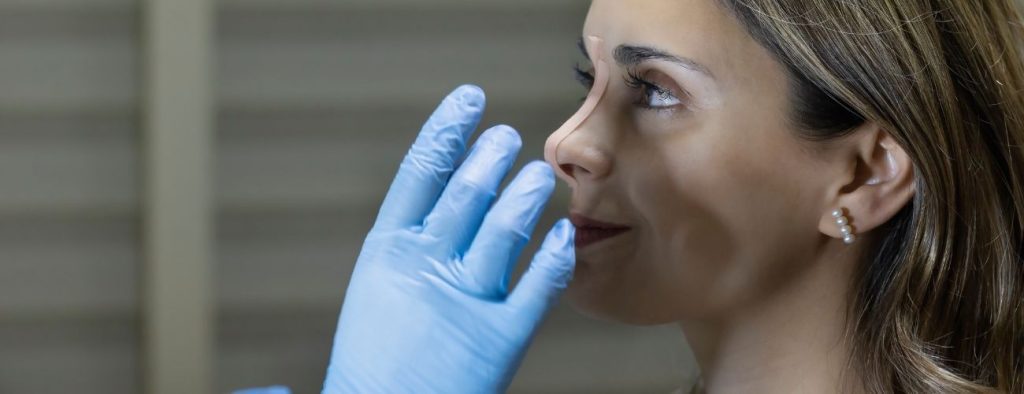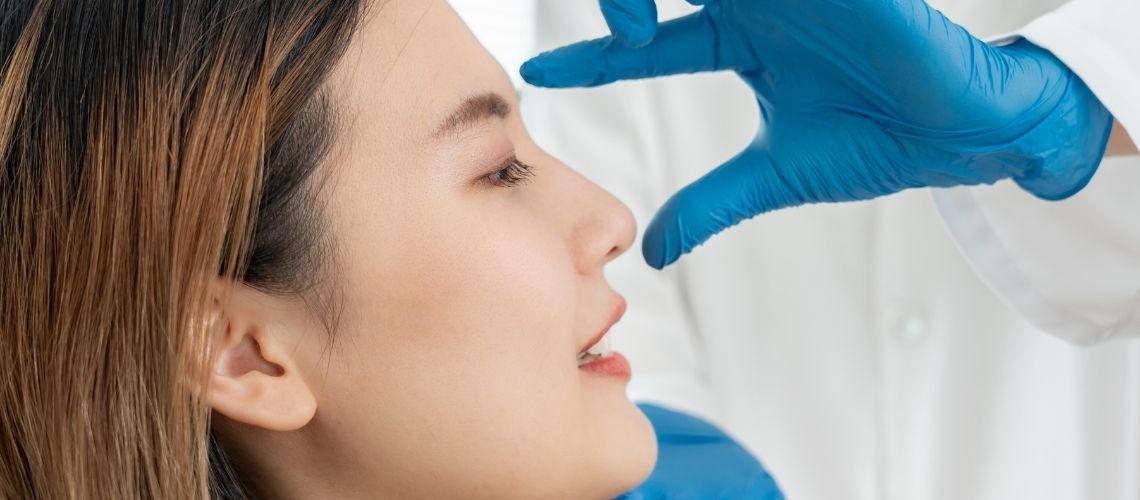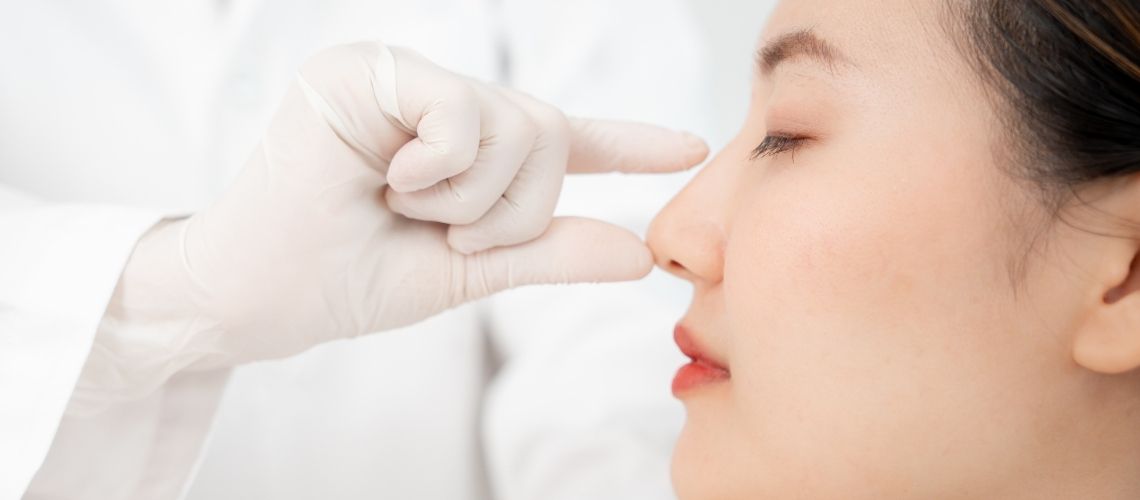Recovery after rhinoplasty typically takes one to two weeks for initial healing. Most patients return to daily activities within this time, although full recovery and refinement of the nasal shape require several months.
Bruising and swelling are most noticeable during the first week. Protective splints are usually removed within 7 to 10 days, after which the nose begins to take its new contour.
Subtle changes continue as tissues settle. It may take up to a year for the final shape to appear, particularly in patients with thicker skin or extensive surgical adjustments.
Adhering to postoperative instructions—such as avoiding heavy exercise and protecting the nose from trauma—ensures optimal recovery and long-term results.
İçindekiler
First Days After Surgery
Following a rhinoplasty procedure, the initial days are pivotal in the patient’s recovery. One of the well-known personalities, Jennifer Aniston, once shared her experience after undergoing a procedure to fix a deviated septum. She remarked, “It’s funny. I had [a deviated septum] fixed – best thing I ever did. I slept like a baby for the first time in years. As far as all the other [rumors], as boring as it sounds, it’s still mine. All of it. Still mine.” This underscores the transformative impact such a procedure can have on an individual’s quality of life, even beyond aesthetics.
The surgery’s immediate aftermath often brings a fair share of discomfort. Some patients report mild to moderate pain. However, this pain is typically manageable with prescribed medications. Others might experience mild bleeding or a discharge from the nostrils. This is a normal part of the healing process, though watching for excessive bleeding is essential.
- Elevating the head, especially during sleep, can significantly reduce swelling.
- Cold compresses, applied judiciously, can be beneficial in reducing puffiness, particularly around the eyes.
- Strenuous activities and heavy lifting should be avoided to prevent undue stress on the healing nose.
- The patient should refrain from blowing their nose, as this can disrupt the surgical site.
- The patient should sleep on their back to avoid putting pressure on the nose.
- Swelling is a common occurrence post rhinoplasty. Typically, the worst of the swelling happens within the first three days. After that, it starts to subside gradually. Yet, patience is key here. While a lot of the apparent swelling diminishes within a week, complete resolution of internal swelling might take longer. Furthermore, the patient should be prepared for potential bruising, especially around the eyes. This, too, will fade with time.
- In essence, the first days after a nose job are crucial. Proper care, combined with patience, ensures a smooth recovery and the best possible results.
Recovery Process of Edema and Swelling
Initially, the patient might witness a semblance of blood-colored watery discharge from the nose. Simultaneously, a feeling akin to a severe cold coupled with potential minor nosebleeds may overshadow their experience. However, by the fourth day, significant improvements generally emerge. The person starts feeling more rejuvenated, and the evident swelling and bruising show signs of receding.
In the span of a week post-operation, the following are notable milestones:
- Between days 4 and 7, contact lens wear becomes feasible, but sleeping should remain upright.
- The protection of the nasal splint from moisture is imperative.
- As the tenth day approaches, gentle nose blowing is permissible, and sleeping posture reverts to the usual. At the same time, any residual black marks around the eyes due to bruising will start fading.
- The second week post-surgery is a pivotal time. The majority of the bruising and swelling ebbs away, enabling many patients to resume work or social activities. For those who are conscious, makeup easily conceals any lingering discoloration.
- By the third week, most evident edema disappears, paving the way for more intense physical activities. As the two-month mark rolls around, numbness and stiffness at the nose tip might persist. However, this phase also signals the green light for engaging in contact sports, but with a cautionary note to apply sunscreen for protection.
- As the months progress, the nose’s shape undergoes subtle refinements. By the end of six months, the swelling has substantially diminished. And, by the culmination of a year, the rhinoplasty recovery journey comes full circle. If any further refinements are required, this period is optimal. Throughout this process, it’s essential for patients to maintain open communication with their surgeon, addressing any concerns that might arise.
How Long Does Recovery Take After Rhinoplasty?
The rhinoplasty recovery process involves several stages as the nose heals and takes its final shape. Most swelling and bruising subside within the first few weeks, but full recovery can take up to a year. Patients are advised to follow post-operative instructions closely, including avoiding strenuous activities and protecting the nose from impact. Nasal congestion and mild discomfort are common in the initial phase. Final results gradually become visible as swelling continues to decrease over time.
| Ultrasonic Rhinoplasty | Return to daily activities in 7–10 days; full recovery may take 3–6 months. |
| Tip Rhinoplasty | Social activities possible in 5–7 days; full recovery takes 3–6 months. |
| Septorhinoplasty | Rest recommended for 10–14 days; complete healing may take 6–12 months. |
| Revision Rhinoplasty | Swelling and bruising for 10–14 days; full recovery can take 12–18 months. |
| Piezo Rhinoplasty | Recovery begins within 7–10 days; full recovery takes 3–6 months. |
| Open Rhinoplasty | Return to social life in 10–14 days; full healing may take 6–12 months. |
| Non-Surgical Nose Job | Resume normal activities in 1–2 days; recovery usually takes a few days. |
| Ethnic Rhinoplasty | Initial healing within 10–14 days; full recovery may take 6–12 months. |
| Closed Rhinoplasty | Return to work in 7–10 days; full recovery in 3–6 months. |
| Letdown Rhinoplasty | Recovery begins within 10–14 days; full healing may take 6–12 months. |
| Preservation Rhinoplasty | Social life resumes in 7–10 days; full recovery in 3–6 months. |
| Wide Nose Rhinoplasty | Swelling expected for 10–14 days; complete healing takes 6–12 months. |
| Functional Rhinoplasty | Return to work in 10 days; full recovery in 3–6 months. |
| Male Rhinoplasty | Initial recovery within 7–10 days; full recovery may take 6–12 months. |
| Large and Long Nose Aesthetics | Swelling and bruising for 10–14 days; full recovery in 6–12 months. |
| Septoplasti | Return to work in 5–7 days; full recovery in 1–2 months. |
| Curved Rhinoplasty | Rest advised for 10–14 days; full healing may take 6–12 months. |
| Nose Rasping Surgery | Recovery within 5–7 days; full healing in 1–3 months. |
| Nose Reduction Surgery | Back to work in 7–10 days; full recovery in 6–12 months. |
| Nose Surgery Without Tampons | Recovery begins in 5–7 days; complete healing in 1–2 months. |

Prof. Dr. Murat Songu – Rhinoplasty (Nose Aesthetics) Specialist
Prof. Dr. Murat Songu was born in 1976 in Izmir and completed his medical education at the Ege University Faculty of Medicine. He then completed his residency training in the Department of Otorhinolaryngology at Celal Bayar University. Between 2005 and 2006, he received advanced training in rhinoplasty, functional nasal surgery, and skull base surgery in Bordeaux, France, working with leading rhinologists such as Prof. Vincent Darrouzet and Dr. Guy Lacher.
Prioritizing natural appearance, the preservation of breathing function, and facial aesthetic harmony, Prof. Dr. Songu is nationally and internationally recognized for his expertise in open rhinoplasty, piezo (ultrasonic) rhinoplasty, revision rhinoplasty, tipplasty, and functional septorhinoplasty. He has participated as an instructor and speaker at numerous rhinoplasty congresses worldwide.
With over 100 scientific publications, book chapters, and more than 1700 citations, Prof. Dr. Murat Songu is one of Türkiye’s most respected academics in the field of rhinoplasty, combining natural, facially harmonious, and functional results with scientific and aesthetic excellence.









